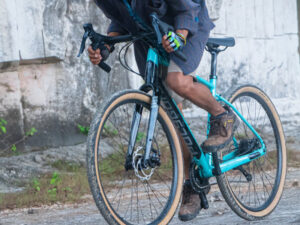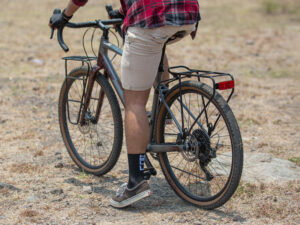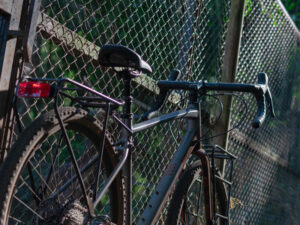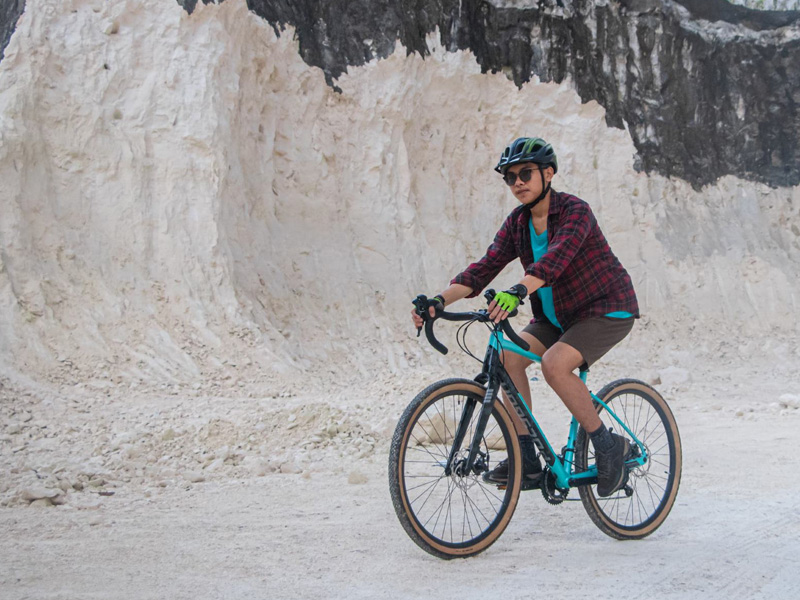Gravel cycling is a relatively new trend in the world of road biking, but it has quickly earned its place as an exciting and challenging sport.
Basically, drop-bar bikes were used for riding on smooth pavement. However, modern cycling has created new types of roads that have made the sport more popular than ever before! Many road cyclists want to try their hand at gravel terrain or light off-road. Bicycle companies are now making bicycles designed specifically for off-road and on-road riding, with the increased control and excitement that comes from using drop bars on these bikes.
If you’ve never ridden gravel before or just want to try your hand at it, here are some tips for your first ride.
1. Bike Set-Up

The first thing you should pay attention to when you want to start gravel cycling is setting up the bike. When riding on gravel, consider both the size and tread pattern of your tires—how much rolling resistance there is will affect whether you can easily ride over larger bumps or not. But this all depends on what kind of frame and fork you choose. If you’re accustomed to riding a mountain bike, with its smaller wheel and chunkier tire, the feel of 650B may be more familiar. Conversely, if you prefer fat tires the opposite might apply.
Although this may not be a consideration for the early days of your gravel riding, investing in different sets of tires can help you level up. For a ride over loose stones and sand, you may want lighter treads that offer more speed with less resistance; but if it’s muddy out there or steep climbs are involved (or both), greater stability might lead to fewer flats by providing better traction. Wider tires provide less traction and sharper punctures but better comfort; narrower ones with deep treads give you more grip in rocky sections.
Lowering your tire pressure can provide several benefits: greater comfort, improved traction on steep downhills, and increased confidence when going over obstacles. You may want to experiment with different pressure levels until you find the combination that feels right on your particular bike/tire setup. The tire pressure should be set according to a rider’s weight and the type of terrain that will be encountered. Generally, start with a pressure of 35 psi (pounds per square inch) and then make adjustments as needed.
You’ll also want comfortable handlebars that flare outwards when you’re ready for more drop bar comfort. Road bike bars are great for speed, but if you want comfort and stability on your gravel rides, try widening things up a bit! Descending can feel scary at first—but it’s worth giving it a shot. When you first tried riding with your hands in the drop position on gravel, it felt awkward and uncomfortable. But after trying it, you’ll realize that having your hands lower than normal made braking easier – as well as steering through high-speed turns.
2. Ride Preparation

To start your comfortable gravel bike trip, prepare some accessories or riding equipment to increase cycling comfort. Riding gravel can take you on long journeys or short adventures away from civilization—planned or unplanned. When planning a long ride, it’s important to learn about water stops so that you won’t find yourself without drinking water. A basic kit should suffice for beginners, but as your experience grows and includes more distant destinations on the map, optional extras may become desirable.
If you ride on gravel roads, it’s important to stay properly hydrated—since long days of cycling often involve periods when one is far from shops. The traditional way to load up water bottles is with a bidon, but on those hot summer days, your hands can accumulate dirt and dust while you do so—making drinking from them an unpleasant experience.When riding gravel, a well-stocked repair kit is essential when you are far from help and on your own. Choosing a hydration pack or vest means having plenty of clean water easily carried with you. When packing for a trip, be sure to include the following essentials: a spare tube (or two); tire levers; pump; chain tool, and quick links—as well as other tools depending on your bike.
3. Gravel Riding Skill & Tips

Start by riding around your neighborhood, then gradually increase the distance you ride. It’s best not to try to cover long distances right away, as other adventure riders do on their bikes. Don’t worry about how far away your destination is or what route you’ll take—just pick two places that are relatively close to each other, and then ride between them.
The efficiency of riding a bike makes it easy to cover large distances; however, when going off-road things become more difficult. If you want to maintain your speed on gravel or dirt trails, you’ll need to work hard and break a sweat—so be careful not to strain yourself by going too fast!
Before taking on a gravel ride, practice your bike handling skills. If you have ridden your gravel bike on local trails or fire roads and have mountain biking experience, then the skills needed for off-road riding may already be familiar to you. For novice off-road cyclists, it’s best to practice in low-pressure environments—such as grassy fields or dirt paths.
Happily, you can train yourself to endure the pain that comes from riding over rough terrain. But if you’re a beginner or not well-trained—and in particular if your legs are sore because of this type of ride and low cadences tend toward weakness instead of strength for you—your best bet is probably an easier course with more flat sections. If you plan on riding gravel often, or if it will be a regular part of your training program, consider including recovery rides in that mix. When you don’t follow an overall training/nutrition program, these rides can make you feel more fatigued than expected.
Gravel biking is a popular form of cycling, but there are several things to consider before you take it up. If you’ve done any sort of mountain biking or off-roading, the transition to gravel bikes will be easy for you. When you cycle on paved roads, however, it’s important to practice handling gravel or other difficult terrain.
If you’ve been looking for the ‘nearest gravel bike shop‘ or looking for a trusted bike shop in Malaysia lately, you’re in the right place! At Rodalink Malaysia, you will be assisted by a professional and experienced team to find the perfect bike that suits your preferences starting from your riding style. Aside from the Polygon gravel bike, you can also take a look at the Polygon road bike, mountain bike, and many other types of bikes from the world’s renowned brands. You can also find the needed accessories, parts, and apparel to complete your cycling gear. Unlike many other distributors who will let you discover and handle how to put your bike on your own, Rodalink will ensure your bike is delivered right to your doorstep in a ready-to-ride form. You can take advantage of various benefits—like free local delivery and 0% installment! Moreover, by joining as a member of Rodalink Malaysia, you will be able to receive information related to ongoing promotions. Start your adventurous cycling journey right away only with Rodalink.
Discover Rodalink Ongoing Promos Now!




